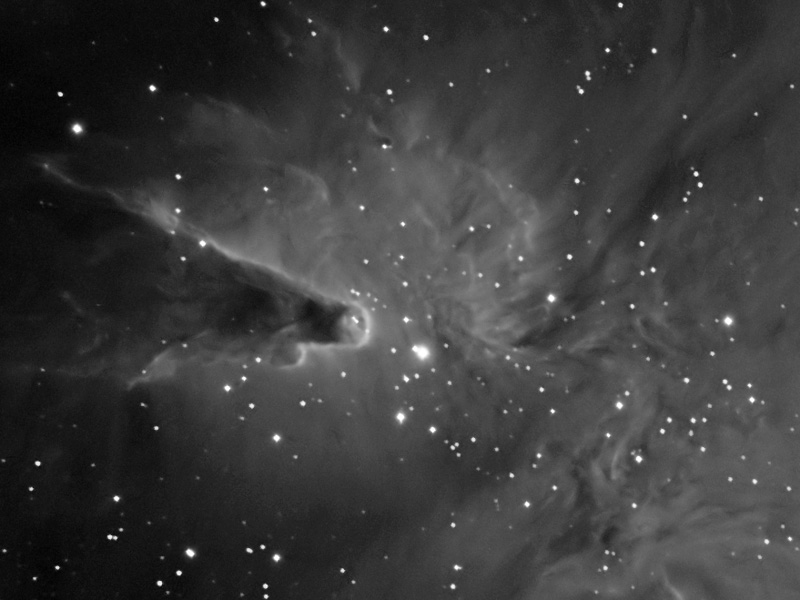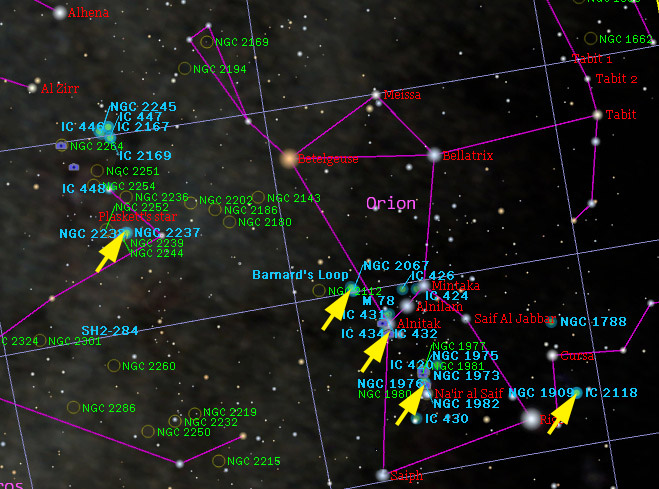The Cone Nebula (NGC2264) is an active region of starbirth, where new stars form inside a cloud of dust and gas. The hot newborn stars shower the cloud with intense radiation, illuminating its interior while simultaneously eroding it. The Cone is about seven light years long, and the head is about 2½ light years across.
To the north (right) of the Cone lies a vast expanse of glowing gas and stars known as the Christmas Tree Cluster, only part of which is shown here. This image was exposed through a hydrogen-alpha filter emphasize the nebula's details.

| Exposure |
H-α:
8.3 hours (25 x 20 min.) unbinned @ -25°C |
| Processing |
Dark and flat frame reduction in CCDSoft SD-combined in MaxIm Further processing in Photoshop CS |
| Date and Location |
November 11 + December 22 & 23, 2005
Montpelier, Virginia, USA |
|
Equipment |
Celestron 9¼" at f/5.6 on a Celestron CGE equatorial mount SBIG ST-8XM camera Optec IFW filter wheel with Astrodon TruBalance filters Optec TCF-S focuser Optec Pyxis camera rotator Guide scope: 60mm f/5 refractor and ST-402 camera Imaging and autoguiding with MaxIm DL 4.11 |
This region of the winter sky contains several beautiful deep-space objects in addition to the Cone Nebula pictured above.
Hover your mouse over a yellow arrow below to see the name of an object. Click on the arrow to see my image of it.

Updated May 23, 2023